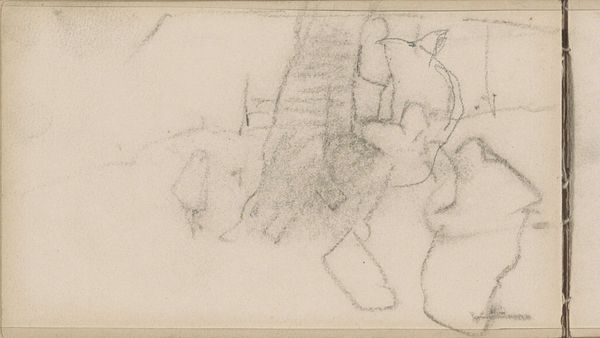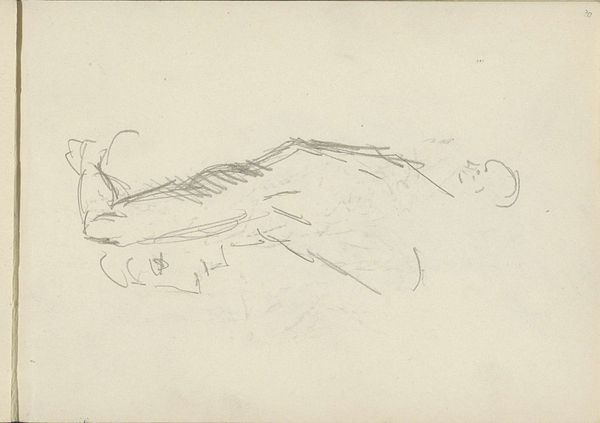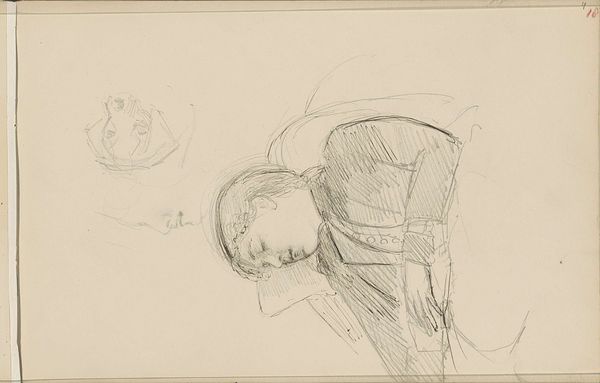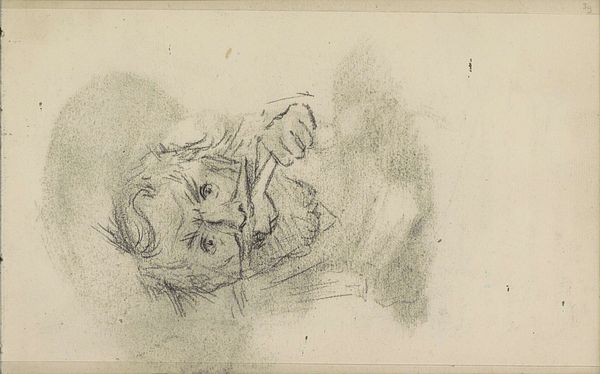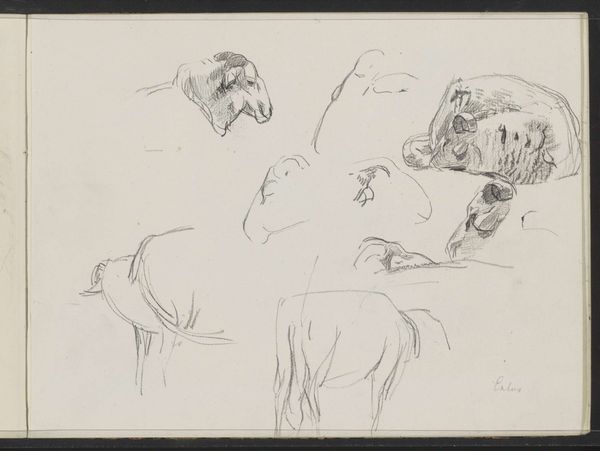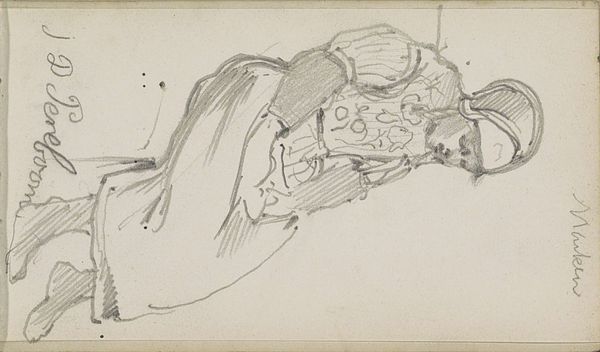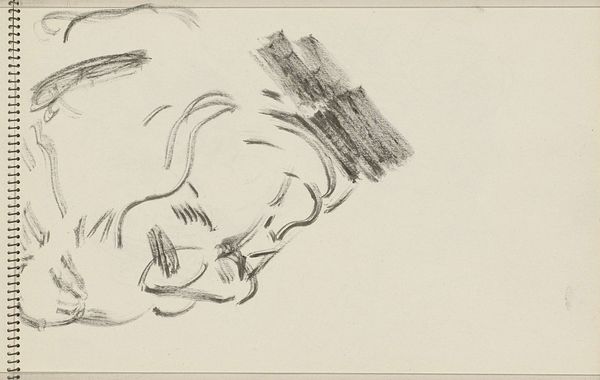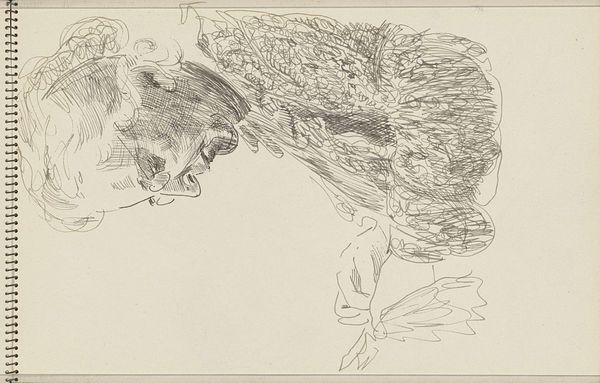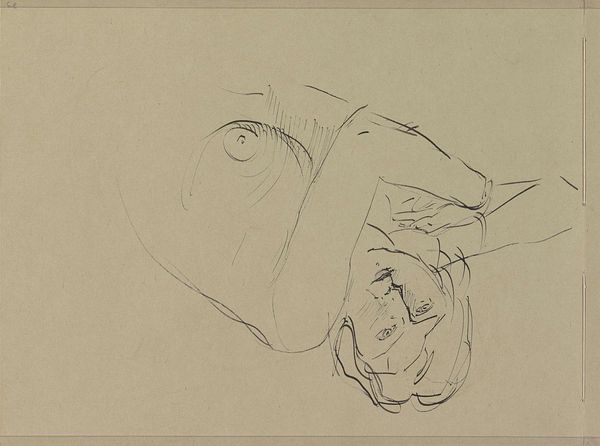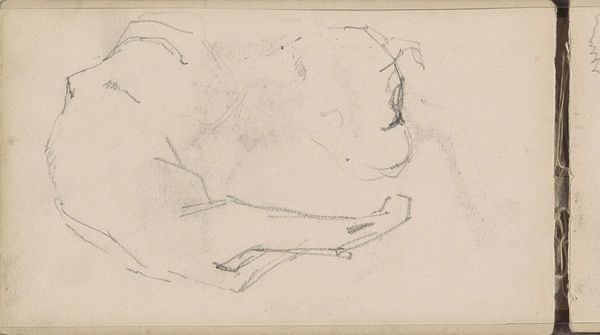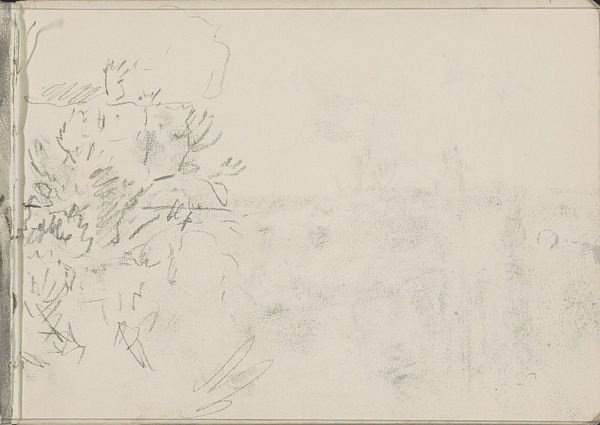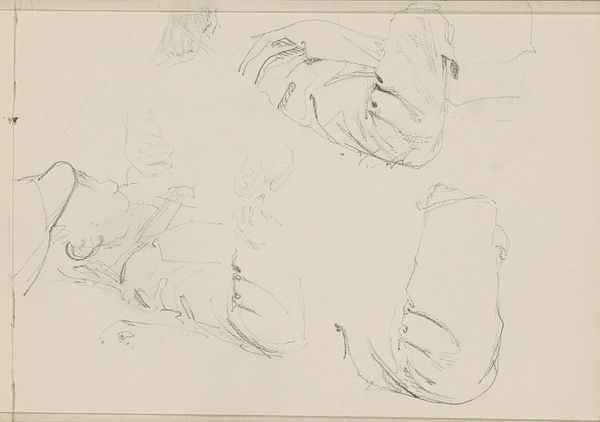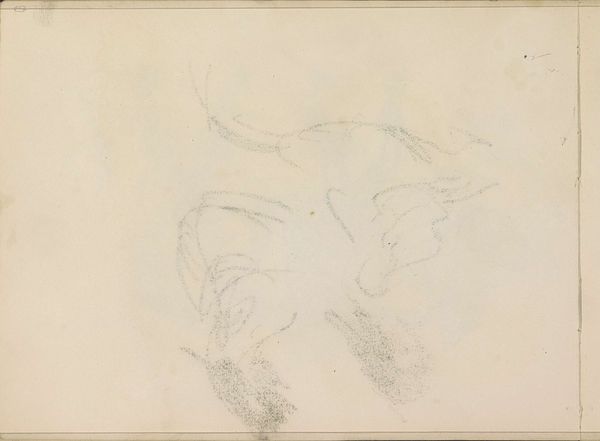
drawing, paper, pencil
#
portrait
#
drawing
#
pencil sketch
#
figuration
#
paper
#
pencil
#
genre-painting
#
realism
Copyright: Rijks Museum: Open Domain
Curator: Jozef Israëls created this poignant pencil drawing, titled "Woman Peeling Potatoes," sometime between 1885 and 1902. It's currently held here at the Rijksmuseum. Editor: It's stark, almost brutal in its simplicity. The rough lines seem to mimic the grit of daily labor. The entire focus rests upon this woman's bent posture. You can almost feel the weight of exhaustion etched into her stance. Curator: Israëls, a leading figure in the Hague School, often depicted the lives of the working class with profound empathy. His work engaged with prevalent social concerns surrounding labor and poverty during the late 19th century. Were these kinds of depictions ways of gaining political favor or attention? Editor: More like using readily available materials – pencil and paper being incredibly accessible means of documenting life. He clearly focuses on process and material in order to display the impact of relentless toil on a body. The rawness of the sketch highlights labor, not hides it with refinement or beautification. Curator: Indeed. And his focus brings an awareness to labor's impact. This artwork also underscores a shift in artistic focus—moving from portraying historical figures or romantic landscapes to everyday people and experiences. How did institutions influence this sort of pivot do you think? Editor: It is not about institutional pressure but it is certainly an awareness. Rather it signals an expanding art market, fueled by increased consumerism which in turn creates a demand to consume novel products such as simple and easily read artworks portraying working people, where those depictions once held no capitalistic value at all. Curator: You make a compelling point. It makes one wonder about our own current values assigned to representation and visibility today. Do these artworks become reduced by social expectations to mere symbols? Editor: Well put. The power dynamics in representation are definitely worth considering and often do change based on society's awareness of materials and those processes connected to material outputs. Curator: Indeed. It’s this type of art piece, that at first seems basic and accessible that can be so easily devalued; and yet has powerful context for all those aware to consider. Editor: Absolutely, and examining these often undervalued pieces of our artistic record lets us understand shifts in socio-political norms as seen and made from the everyday person's view and experiences, not some elevated privileged one.
Comments
No comments
Be the first to comment and join the conversation on the ultimate creative platform.
